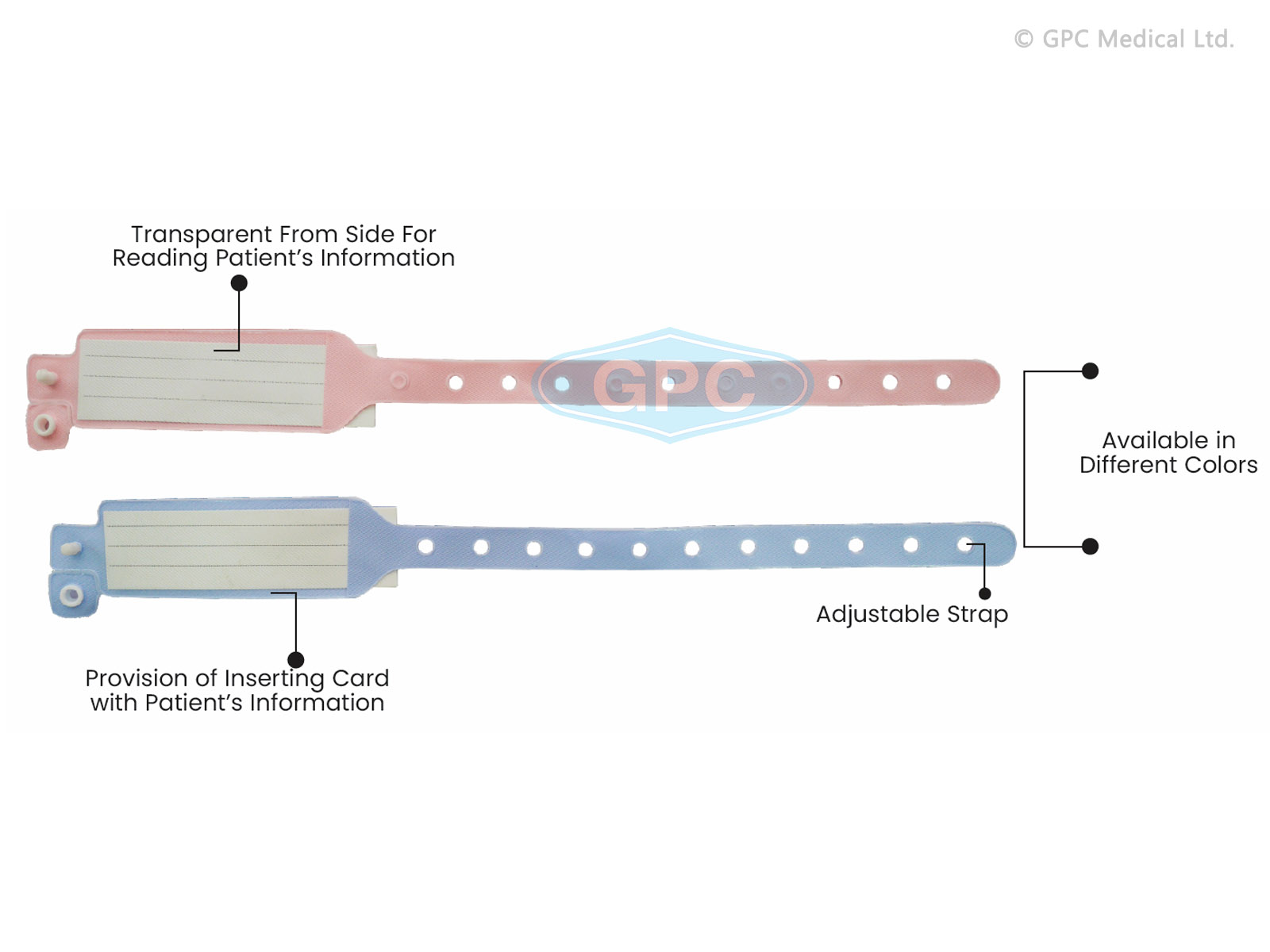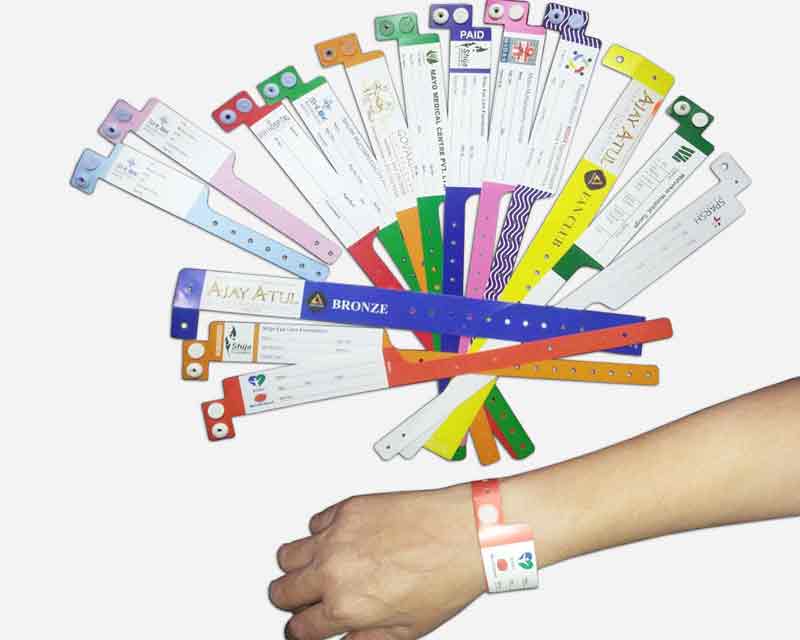Checking Out the Numerous Sorts Of Patient Identification Band Used in Clinical Facilities
In the detailed world of health care, the critical function of Patient Identification bands frequently goes undetected. These bands, differing from easy paper wristbands to advanced RFID bands, create the foundation of Patient security protocols, making certain accuracy in Patient Identification. The huge diversity of these bands, each with its special advantages and restrictions, is frequently forgotten. As we navigate via this topic, one might acquire understanding right into the subtle intricacies and important significance of such bands in clinical facilities.
Comprehending the Importance of Patient Identification Bands
While they might appear like simple accessories, Patient Identification bands play an essential duty in clinical facilities. These bands serve as an essential tool for confirming Patient identity, protecting against clinical errors associated to misidentification. Patient Identification bands additionally help in simplifying management tasks, guaranteeing exact record-keeping and billing.
Typical Paper Wristbands: Their Use and Limitations
Traditional paper wristbands have been a staple in Patient Identification across numerous medical centers. While their use is widespread, they harbor specific limitations that may affect their efficiency in Patient management. This area will certainly concentrate on the scope of their application and the inherent downsides connected with their use.
Paper Wristbands: Use Scope
In the realm of Patient Identification, paper wristbands have long held a vital function. These bands are generally made use of in outpatient setups, where the Patient's remain is short-term. The wristbands have necessary information such as the Patient's name, day of birth, and an unique Identification number. This straightforward, yet effective system, allows doctor to swiftly and precisely identify clients, guaranteeing the appropriate therapy is carried out. Paper wristbands are also used in emergency situations, where quick Identification is vital. Their use encompasses events like blood contribution drives and mass vaccination programs, further stressing their versatility. Regardless of advancements in technology, the humble paper wristband stays a reputable and economical solution for Patient Identification in numerous health care situations.
Limitations of Paper Wristbands
Regardless of their extensive use, paper wristbands are not without their disadvantages. Their physical longevity is just one of the significant limitations. Exposure to water, sweat, or rough handling can provide them unreadable or perhaps create them to degenerate. Additionally, paper wristbands commonly do not have the technological abilities of more modern choices, such as barcoding or RFID chips, restricting their performance to simply displaying written details. The lack of ability to update or modify the data on the wristband is one more shortcoming. If the info is handwritten, legibility can be compromised, leading to potential misidentification. Ultimately, paper wristbands can cause discomfort or skin irritability to some individuals, especially when worn for prolonged durations.
Barcoded Wristbands: Improvements in Patient Identification
While Patient Identification has actually long been a critical aspect of healthcare, the introduction of barcoded wristbands symbolizes a substantial jump onward. These bands leverage the simpleness of barcoding technology, allowing for Patient information to be quickly scanned and accessed. They enhance the rate and precision of Patient Identification, reducing the danger of medical mistakes connected to misidentification.
Superhigh Frequency Identification (RFID) Bands: a Step In The Direction Of Futuristic Medical Care
The evolution of Patient Identification bands has actually caused the development of Radio Frequency Identification (RFID) Bands (patient identification band). These cutting-edge gadgets present crucial benefits for health care facilities, offering an extra effective and technologically advanced methods of Patient Identification. The implementation of RFID in healthcare is a substantial action towards a more advanced method to Patient management and safety and security
Recognizing RFID Bands

RFID Bands: Secret Benefits
Accepting a future where technology and health care merge, radio frequency resource Identification bands supply numerous essential benefits. Largely, these bands boost Patient safety and security by giving exact, rapid Identification, consequently reducing clinical mistakes. RFID bands can save a huge amount of Patient information, consisting of medical background and allergic reactions, enabling personalized care. They also improve management tasks, as the automated data entrance changes hands-on procedures, boosting efficiency and lowering documents. RFID bands offer real-time monitoring of people, critical in risky environments such as surgical treatment or intensive care. Finally, these bands are resilient and resistant to environmental factors, making sure regular performance. Generally, RFID bands stand for a considerable advancement in Patient Identification technology, benefiting both individuals and doctor.
Applying RFID in Healthcare
As we enter a technologically sophisticated period, the execution of RFID bands in medical care comes to browse around this web-site be increasingly essential. These bands give a seamless way to track and identify clients, ensuring their safety and improving effectiveness in therapy procedures. RFID bands provide many advantages over conventional Identification methods. They can save a substantial quantity of information, consisting of the Patient's medical history and therapy strategies, which can be quickly accessed by doctor. This information assists doctors make notified decisions pertaining to the Patient's treatment plan. Furthermore, RFID bands decrease medical errors by supplying accurate Patient Identification, which is crucial in avoiding misdiagnosis or wrong medication administration. Therefore, the application of RFID bands is a significant step towards boosting Patient safety and security and health care delivery.

Color-Coded Wristbands: Aiding in Quick and Accurate Medical Diagnosis
In the dynamic setting of a clinical facility, color-coded wristbands have arised as essential devices for swift and accurate Identification of an individual's medical condition. These wristbands, worn by people, bring particular colors that match to different medical problems or conditions. Red might indicate allergic reaction dangers, while yellow may indicate a fall risk. This system is made to use immediate visual signs to health care carriers, improving Patient security and care quality. In emergency situation scenarios, making use of these wristbands enables for rapid decision-making. The efficiency of color-coded wristbands depends on the harmony of color analysis throughout health care establishments, requiring typical standards for constant application.
Techniques for Effective Execution and Monitoring of Patient ID Bands
Attaining optimal usage of Patient Identification bands requires a well-structured approach for their execution and management. The primary step entails training all wellness employees on the importance of correctly applying and reading these bands. Medical facilities ought to standardize the use of ID bands across all divisions, making certain harmony and minimizing inconsistencies. Regular audits should be conducted to validate adherence to plans and to remedy any type of disparities. Patient education and learning is additionally crucial; Website individuals need to comprehend the function of the bands and the need for their consistent wear. patient identification band. Last but not least, it's necessary to have a backup plan in area, such as barcode scanning or biometrics, to guarantee that Patient Identification is never ever jeopardized.
Verdict
Patient Identification bands are crucial in clinical facilities to make certain safety and precision. Traditional paper, barcoded, RFID, and color-coded wristbands each hold unique benefits, varying from cost-effectiveness to sophisticated information storage and immediate clinical notifies. Reliable implementation and administration of these bands can significantly minimize clinical mistakes, increase performance, and improve overall Patient treatment. Thus, understanding and utilizing these Identification devices is paramount for maintaining high criteria in health care.
These bands, differing from simple paper wristbands to advanced RFID bands, form the foundation of Patient security methods, making sure accuracy in Patient Identification.The evolution of Patient Identification bands has actually brought regarding the emergence of Radio Regularity Identification (RFID) Bands. In general, RFID bands represent a significant development in Patient Identification innovation, profiting both patients and medical care carriers.
RFID bands minimize clinical mistakes by offering exact Patient Identification, which is essential in avoiding misdiagnosis or wrong medication administration. Patient education and learning is additionally critical; individuals must comprehend the function of the bands and the requirement for their constant wear.